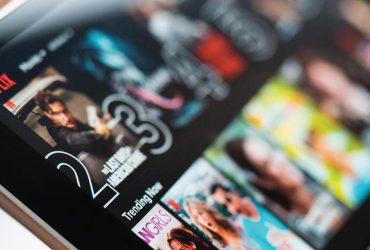Subscriptions offer fantastic options, but we are increasingly subscribing to more services. The problem is not that they are going up in price; it is that we are paying for things we do not use.
Reed Hastings and Marc Randolph were lucky—very lucky. When Netflix’s creators came up with the idea of sending DVD movies by mail, the format had just arrived on the market. So how was it that they didn’t even test whether it would work with a DVD? Randolph grabbed a CD he had lying around the house, put it in a cardboard envelope, and mailed it to his friend and business partner.
The CD arrived in perfect condition, but neither Hastings nor Randolph knew that their proof of delivery had actually been a sham. When the U.S. Postal Service saw that a letter or package was being sent to a postal zone, employees would put it directly into an express delivery bag—it bypassed sorting machines that could damage the product—so the CD arrived intact.
That became one of the many anecdotes in the history of that company that, for many years, sent millions of movie DVDs by mail. But in reality, Netflix ended up being much more.
It ended up being the company that showed us that subscriptions could make sense. And when other companies realized that, they started adopting that business model. The music industry and the software industry did it, for example, and as they did, Netflix started to have significant competitors.
We’ve realized that we’re subscribing to too many things. And the worst part is that we’re not getting the most out of those subscriptions. It’s like the gym effect: you sign up, you pay, but you don’t go.
At first, users were happy: the rates were affordable, the catalog and service were fantastic, and family plans made it possible to subscribe to several streaming services at once. The buffet was succulent, and you could choose which movie, series, or documentary to watch from hundreds of thousands not only on Netflix but also on other platforms such as Amazon Prime Video, Apple TV+, (HBO) Max, Disney+, or Movistar+, among others.
And then we started to realize something: we were subscribing to too many things. And the worst part of all: we weren’t getting any value out of those subscriptions. It was like the gym effect: you signed up and paid but didn’t go. And with this, the same thing, but multiplied. Instead of joining one gym, it was like you were joining four, five, or more. And maybe you went to one of them occasionally, but you had neglected the others.
Hello, subscription fatigue
According to the CNMC, in the second quarter of 2024, 61.9% of internet users were subscribed to a content streaming platform. A year earlier, the percentage was 58.1%. Not only that, of those subscribers, 21.2% are subscribed to four or more services and 18.4% to three.
As time has gone by, subscriptions have begun to show their other side. Netflix, Disney+, and Max have raised their prices, stopped allowing account sharing with family plans, and broadcast more and more ads. Subscriptions are no longer as affordable or as wonderful, and suddenly, we are starting to feel something that is increasingly worrying: subscription fatigue.
Significantly, the “wonderful” subscriptions cause four out of ten people who use them to be exhausted from using them, according to a study by ExpressVPN.
We are inundated with subscriptions, and increasingly, they are draining and exhausting us. A recent survey by ExpressVPN, which talks about the “gym effect,” makes this very clear. People subscribe to a large number of services, even if they don’t always pay for them. According to the data revealed in this report, 20% of users use one subscription that they don’t pay for (they borrow one from their parents, for example), and 12% use two subscriptions for which they don’t pay anything.
Sharing a subscription can also be a double-edged sword. While it lowers the price of the subscription on the one hand — and that’s always important — it raises concerns on the other hand. For example, managing shared accounts and passwords that may end up in the hands of the wrong person.
There are more disadvantages: what happens if several people who share the subscription want to watch the same content at the same time and can’t? Companies like Netflix have done away with family accounts, and subscriptions have increasingly become something individual and difficult to transfer.
Streaming video content is by far the most common type of subscription, with 75% of respondents subscribing to one of these platforms, while music streaming is somewhat less popular, with only 51% of study participants admitting to being users of a service such as Spotify or YouTube Music .
It is advisable to keep track of your subscriptions. Not only when they are renewed and what each one costs, but also how much you are using them.
But there are many subscriptions that we like and sign up for. We subscribe to gaming platforms ( 24% of respondents do so), we subscribe to order food (16%), to use services that help us work (10%) or to use smart devices and appliances (10%). And of course, of course, we skip the gym (or maybe not even that) and subscribe to fitness apps (8%).
Rest to avoid that fatigue
That makes it inevitable that subscriptions will eventually overwhelm us. In the ExpressVPN study , 15% of users say they feel this way all the time, while 25% feel this way sometimes. Significantly, the “wonderful” subscriptions result in four out of ten people who use them being exhausted from using them. Significant and worrying.
As discussed in “ 2 in 5 People Surveyed Suffer from Subscription Fatigue,” there are ways to combat it. The most effective way is to go for quality over quantity. Be selective and consistent. Find a balance and be practical.
Despite evident subscription fatigue, 63% of respondents did not plan to reduce the number of services they subscribe to
ExpressVPN’s service is a good example: its features go beyond offering a security and privacy tool, and for example it is a perfect companion for content platforms. Firstly, because it allows you to avoid geographic restrictions. Secondly, because it offers support for multiple devices, it is unnecessary to have security solutions for each device. It is a practical and useful option to get more and better out of these subscriptions and do so in a conscious way.
There are, of course, other practical tips when it comes to finding that balance and that “quality over quantity.” The most obvious one is to try to keep track of your subscriptions . Not only when they are renewed and what each one costs—there are various apps that help in that regard—but also how much you are using them.
The wonderful thing about subscriptions, especially in the realm of video streaming, is that you can easily jump from one to another.
Cancelling your subscription for two or three months and then reactivating it when that new series or film you want to watch comes out is not only easy, it’s ideal. If you’ve had a Netflix binge in February, it might not be a bad idea to temporarily cancel your subscription to have another binge of Max or Disney+ in March, for example.
You can even do something crazy: watch movies on DVD in physical format again. And so on, because fortunately, the great advantage of subscriptions is that you can log in and out whenever you want or need to.
Companies know this, of course, but it seems that users are not taking it into account at the moment. ExpressVPN’s striking report also contained another particularly unusual piece of data: despite the obvious sign-up fatigue, 63% of respondents did not plan to reduce the number of services they subscribe to. It’s surprising, but perhaps it’s another element of that gym effect we were talking about. I sign up, I pay, but I don’t go.
And perhaps it’s time to stop going to the gym and start meditating. Conscious digital management, as promoted by ExpressVPN, is needed to achieve a balanced and simplified digital life. Quite a challenge.

















Leave a Reply